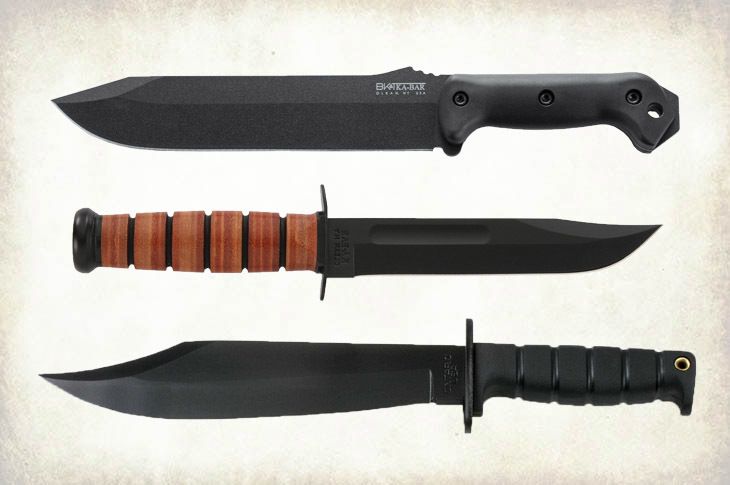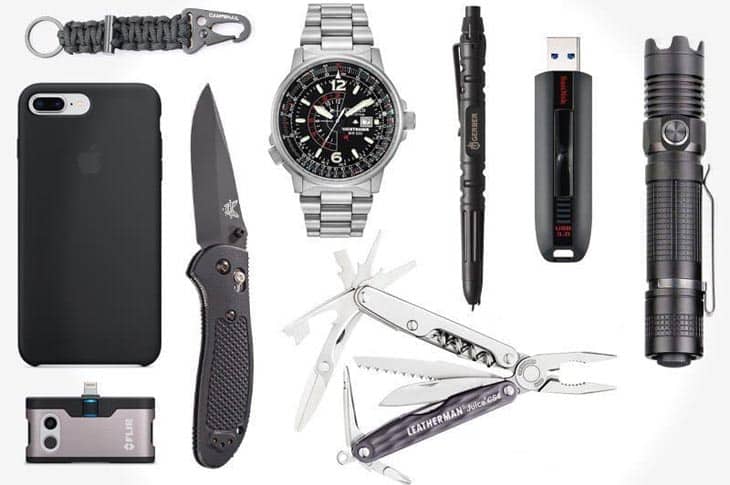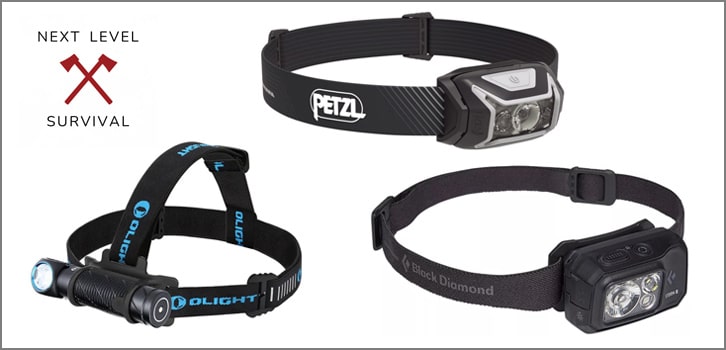5 Best Solar Phone Chargers On The Market (Right Now)
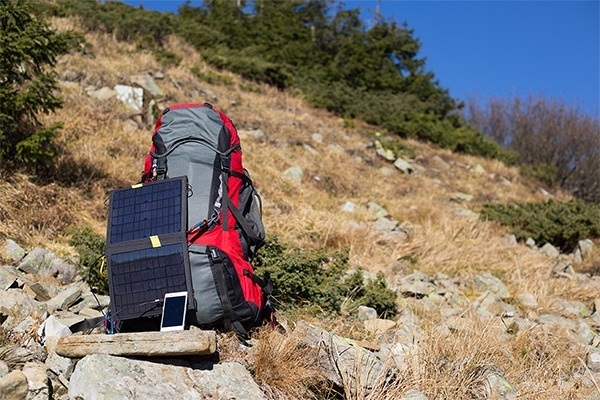
These days, pretty much everyone has a cell phone.
I’ll bet you’re either reading this on your phone or it’s sitting nearby right now.
And I’ll bet you know how it feels like to run out of power.
You know, that frustrated feeling when your phone goes dead in the middle of the day.
… and just when you’re right in the middle of something important.
Guess what?
With advancements in solar power technology, a solar cell phone charger is now the “must-have” device and should be a key part of any survival gear list.
Why?
You can charge your phone on-the-go during the day and never have to deal with running out of power again. And if you’re in the city and the SHTF, having a way to power up your cell phone is part of your critical urban survival skills.
I don’t go anywhere without my solar charger. When my friends saw mine for the first time on a camping trip, they all went out and got one themselves.
So if you ever need an idea for a gift, this is a popular one.
But here’s why you need to keep reading this article:
I don’t recommend you run out and buy just any solar charger for your cell phone.
There are few things you need to know, like what makes a solar powered phone charger a quality one. You don’t want to waste your money on a bad one.
So, in this article, we’re going to cover the following solar powered cell phone charging details:
- Why you should get a solar phone charger
- The different types of solar powered charging for your phone (there are 3 types)
- The best option that we recommend
Why You Should Get A Solar Charger For Your Phone
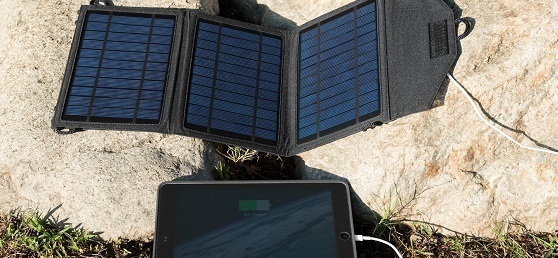
The Best Backup Plan
Cell phones used to be for making phone calls, and that was it.
Not anymore.
These days, smartphones have an incredible range of uses. They include:
- GPS
- Camera
- Internet Connection
- Recording Device
- Play Music
- Flashlight
- Huge Number of Apps
Like any electronics, they EAT power like there’s no tomorrow. Luckily, all smartphones come with a rechargeable battery so you don’t have to spend a small fortune on batteries.
But rechargeable batteries run out of power fast!
And it’s always at the most inconvenient time.
You know, when you’re as far from an electrical outlet as possible.
Usually that’s when you grumble and swear under your breath… while you put your useless phone away in your pocket until you get home. You just had to live with it.
Maybe your situation was even more serious.
You could be on the road travelling and looked to your phone for GPS or a map.
No power.
Maybe you wanted to take a picture of a special moment knowing you won’t get another chance.
Phone won’t turn on – no power, no picture.
What about if you got turned around on a trail and realized you were lost.
Phone has no power. Can’t call for help.
Not anymore.
You see, using the sun’s light, a solar charging will power up your phone… anywhere.
So, for everyday use, a solar phone charger is your backup power.
For emergencies, it’s your life saver!

Money Saver
Using your solar phone charger frequently can actually save you some money.
You get to take advantage of the sun’s “free” energy.
Of course, this all depends on how much you spend on your charger in the first place.
If you get a very expensive one, you’ll have a hard time recovering your purchase cost.
Honestly, you’ll probably never save enough electricity costs to cover off the purchase price completely.
Helps Save The Environment
If you care about your impact on the environment, then this is a “green” must-have.
It’s not exactly like shutting down a coal-fired plant, but using the sun to charge your phone helps offset your carbon footprint.
3 Types of Solar Phone Chargers
You will find hundreds of solar charging solutions out there these days.
All of them are designed to keep your electronics powered up whether your running, camping, or in a dire situation.
While each has its own unique features, solar powered phone chargers fall into three different categories:
- Direct Chargers – has no battery bank
- Indirect Chargers – has battery bank
- Case Chargers – has small battery bank
So how do you choose which type is right for you?
Well it depends on how you prefer to use your iphone.
If you want efficient and simple, then a direct charger is the type you want.
They work best if you plan on staying in one place during the day and you don’t use your phone all the time.
If you are on the go, then an indirect charger with a battery bank may be what you need.
Sometimes stopping and waiting for your phone to charge is NOT an option. Then charging up the portable battery bank allows you to take the power with you.
If you don’t want to have any extra gear with you at all, then a case charger may be your answer.
This helps extend your phone’s battery life when you’re not using it.
That’s just a quick summary of the 3 types of solar chargers for your phone.
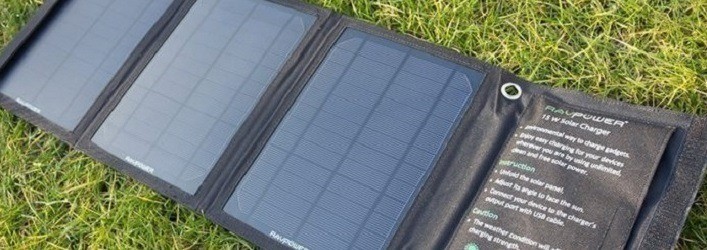
Direct Chargers
How they direct solar chargers work is they connect directly from a solar panel to your smartphone using a USB cable.
A solar panel phone charger is the most efficient way of solar charging.
Because it is a direct connection between the solar panel and your phone, there are fewer transfer losses of electricity.
You see, each time electricity is transferred between components, a little bit of the available electricity is lost.
So, if there are many components the electricity needs to flow through to get to your phone, then those small electrical losses can add up.
Then it takes longer for your phone to charge up.
So the fewer the components, the more efficient it is.
Transferring electricity directly from the solar panel to the phone maximizes the amount of charge going to your phone.
Also, direct panel chargers need fewer internal parts and electronic circuits. This makes them tougher and more resistant to weather than the other types of solar phone chargers.
Which means you can still use them when the weather is not cooperating.
One of the major downsides with direct solar charging is that you are basically stuck in one location while charging.
When you have variable sunlight due to clouds or shade, then it takes longer to charge your device.
A single full charge for your device could take several hours of direct sunlight.
During that time, you’ll have to re-adjust the solar panel several times to directly face and collect the sunlight.
Basically, using direct solar chargers can be much less convenient if you are on the move.
Another issue with direct solar chargers is fluctuating voltage levels.
As the incoming sunlight fluctuates with cloud cover or shade, the voltage also fluctuates accordingly.
So, in good full sunlight, your device will charge more quickly. But in lower light conditions, not enough charge may be produced for your phone to register it.
You see, modern smart phones can sense changes in voltage and in order to protect the phone from power surges, they have built in safeguards that may stop the phone from charging if the voltage is too low (or too high).
Of course, what if it’s just too dark out?
You are limited to using direct chargers to daylight hours.
Direct Solar Phone Charger Examples
Goal Zero Boulder 100 BC (Briefcase)
The Boulder is a 100 Watt panel that can be folded into a briefcase for easy carrying.
It’s too big to carry around every day but It’s perfect for those trips where you set up a campsite.
This unit will charge up your phone and other electronics fast.
It can also charge up a battery bank so now you can keep all your devices running.

Solar Battery Banks
The biggest benefit of a battery bank solar charger is you get to charge your devices when and where it’s convenient.
Having a high-capacity external battery solves the many problems that come with direct charging solar panels.
Many battery banks come with up to 26,000 mAh capacities which is enough to charge up your phone several times.
That can be really useful when you only have good sunlight for solar charging every few days.
You can also charge a battery bank by plugging it into a regular wall plug.
That way, you can leave home with your battery bank fully charged.
The newer battery banks are designed with rugged circuitry that is less sensitive to fluctuating voltage. Which means, they charge more efficiently on cloudy days or in low light conditions than direct solar chargers.
What all this means is convenience and flexibility: you can charge the battery bank whenever it’s convenient during the day.
Then later, you can charge your phone at night (or whenever you need to).
The one drawback, using a battery bank means one more device added between collecting the sun’s energy and your device.
As we mentioned earlier, that means there’s more transfer loss from one device to the next.
Solar Battery Bank Examples
Quadrapro Solar Powerbank
If you want the ideal solar charging solution, we recommend the Quadrapro Solar Powerbank.
This is a complete solar battery bank system with solar panels integrated with a battery bank.
It’s the perfect size (NOT too big and bulky, NOT too small and underpowered) and for its size, it generates the right amount of power for your devices.

And because it’s a battery bank, you can charge your dead batteries even when there’s no sun.
With a full charge, this unit stores about 3 times the typical cell phone capacity. So you have power to spare.
All you have to do is place the Quadrapro Solar Powerbank in the sunlight (or you can plug it into a wall plug), and the large capacity battery backup stores a huge amount of power.
Then you have power at your fingertips whenever you need it. And the battery can store its charge for months.
The Quadrapro Solar Powerbank is, by far, our favorite solar phone charger solution.
Qi Solar Power Bank & Portable Charger
This highly rated little unit features:
- Tough, rugged construction and design
- Compact, portable and lightweight
- 10,000mAh wireless power bank and charger
- Huge backup battery storage
- LED flashlight built-in
Solar Charging Phone Case
Sometimes you just don’t want to deal with separate solar panel chargers and their cables. They add more weight to your pack.
Or what if you forget them at home? Then what?
Sometimes the best option is the simplest one.
A solar charging phone case let’s you turn your phone over and face the sun to charge.
Since the charger and solar panel are integrated with the case, they are highly compact and portable. Where your phone goes, so does the case.
The drawback to these units is they have small solar panels and they don’t have a high-capacity battery bank.
So they don’t provide a lot of charge. That means they take much longer to charge your phone.
They need to be in direct sunlight to be the most effective.
But keeping your phone in direct sunlight for a long time may cause your phone to overheat.
And the solar charging phone cases fit specific models of phone.
Solar Powered Phone Charger Case Example
The concept of a solar powered phone charger case is a good one.
However, the technology hasn’t been developed enough yet for our liking.
And, the selection of phones the case is compatible with is very limited.
Because the solar panel needs to be small to fit on the phone case, it is NOT intended to charge your phone quickly.
What it does is help extend the existing charge in your phone’s battery — if you happen to be spending time in direct sunlight.
So right now, we don’t recommend this style of portable solar charger.
The Best Phone Charging Solar Panel Option
From all the options, the solar battery banks have the best mix of important features.
That’s why we recommend them as your phone’s solar charging solution.
As we mentioned before, they provide the greatest combination of convenience and flexibility.
Most models allow you to charge multiple devices at the same time.
So, if you have a lot of battery powered gear to be charged, it’ll save you the most time.
Also, they have USB plug ports so you can plug in different style connectors.
That way you don’t have to go out and buy a new charger every time you get a new phone.
We recommend two different solar panel chargers for phones – depending on your preference.
- Our first recommendation is for larger power needs – like a family.
- Our second recommendation is more for personal use, like a hiker or trekker who needs light, compact and tough as nails.
#1 Recommendation
For anyone who wants the best mobile solar phone charger that stores a huge amount of power, this is your best choice.
This unit will keep your devices (and everyone else’s) charged and ready to go.
Want to keep your family’s gadgets (phones, tablets, etc.) charged up? Buy one for your family.
#2 Recommendation
This rugged piece of outdoor awesomeness will come in handy pretty much all the time.
This solar panel and battery pack will take just about anything you can throw at it and still help you get out of jam.
It’s weather resistant (not waterproof) so I don’t have to worry if water gets a little splash on it or if the weather changes suddenly.
I have one of these attached to my EDC backpack that I keep in my car. I have this thing with me every single day.
I bring it camping and hiking every time I go. So, when I need it, it’s there and I know it works.
It’s one the best things I’ve bought.
P.S. It makes a great survival gift.






